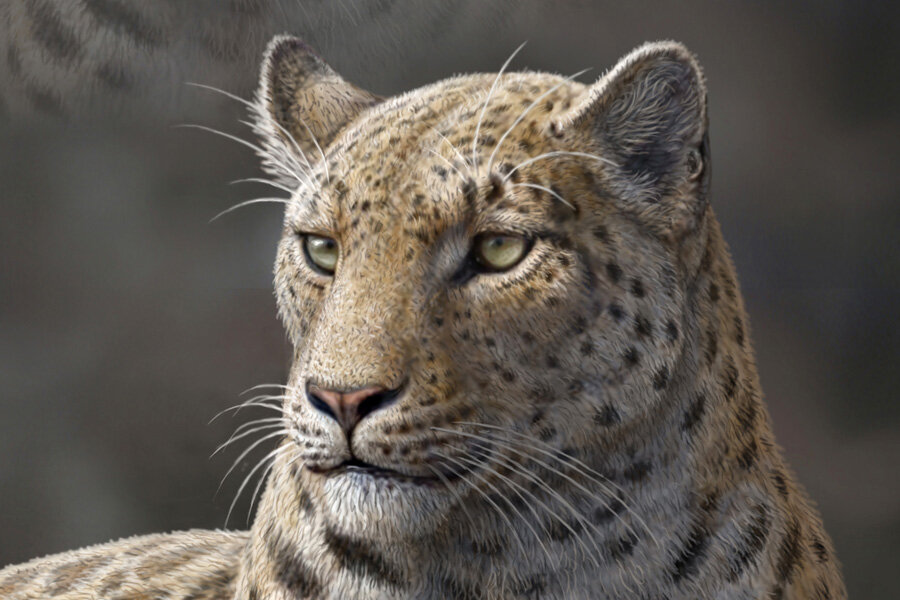Oldest big cat fossil ever found is new species
Loading...
| Los Angeles
Scientists have unearthed the oldest big cat fossil yet, suggesting the predator — similar to a snow leopard — evolved in Asia and spread out.
The nearly complete skull dug up in Tibet was estimated at 4.4 million years old — older than the big cat remains recovered from Tanzania dating to about 3.7 million years ago, the team reported.
While the new specimen is not a direct ancestor to big cats like tigers, lions, jaguars, it is closely related to the snow leopard, said study leader Jack Tseng of the American Museum of Natural History in New York.
The find was detailed in Wednesday's Proceedings of the Royal Society B: Biological Sciences.
In 2010, Tseng and colleagues drove to the Himalayas to go fossil hunting. The team split up to cover more ground. While hiking on a mountaintop, Tseng's wife, Juan Liu, a graduate student, found a trove of scattered bones and radioed others to help collect them. As they started digging, they found a buried cat skull about the size of a large grapefruit.
By analyzing the surrounding rocks and soil, the researchers determined the skull's age.
The fossil is "convincingly older than the current record holder," said David Polly, a paleontologist at Indiana University who had no role in the study.
Polly said in an email that there's also good evidence that the big cat lived in the Tibetan plateau and there could be even older big cat fossils there to uncover.
The newest fossil had a broad forehead similar to snow leopards and its front teeth were heavily worn. It was small for a big cat — probably about the size of a clouded leopard, a cat found in the rainforests of Southeast Asia that can grow to 50 pounds.
The team returned last year and excavated more cat bones including lower jaw fragments and pieces of a second skull.
The new cat species was named Panthera blytheae after Blythe Haaga, whose parents are donors of the Natural History Museum of Los Angeles County. Tseng was a graduate student at the University of Southern California and worked at the museum during the fossil discovery.
In an email, Anjali Goswami of University College London called the cat skull a "very significant find" and "magnificently preserved" that can help scientists learn more about modern snow leopards.





